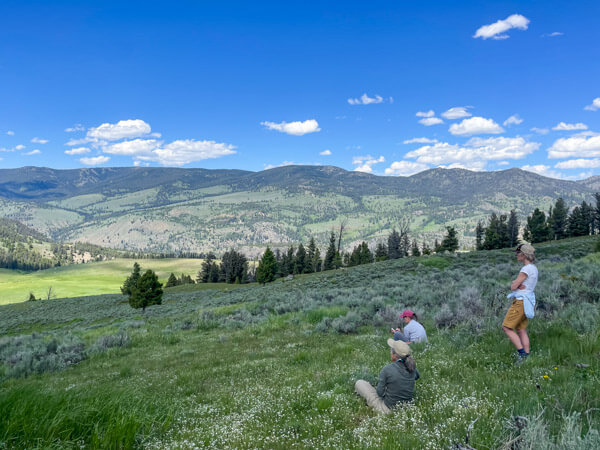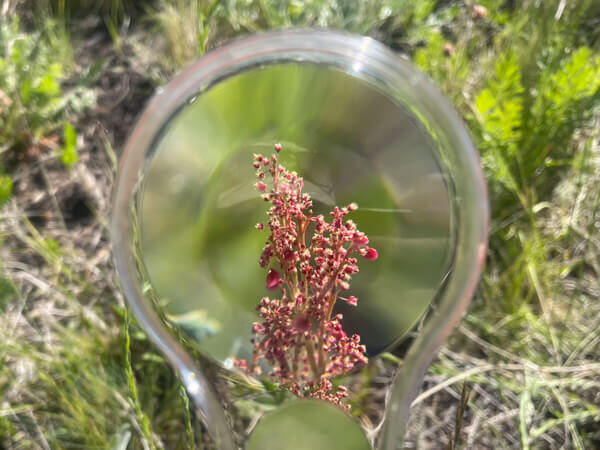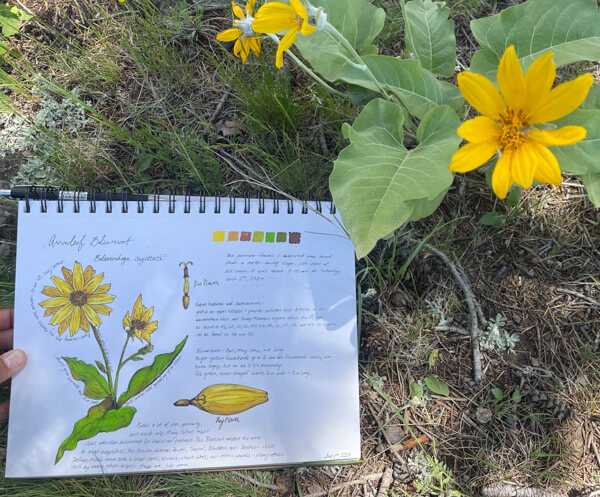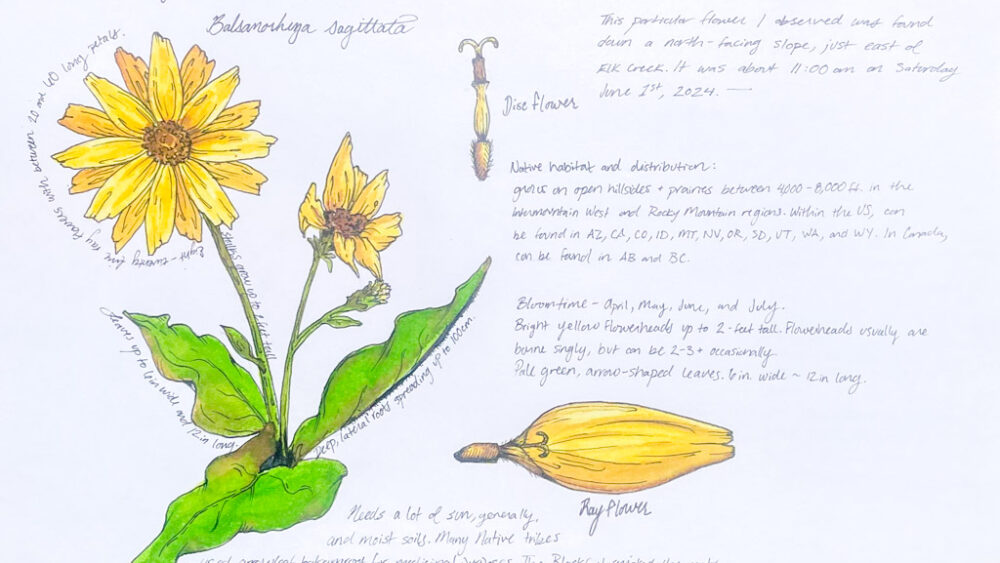by Piper Jefferson, Field Educator
In the modern age, with the majority of people accustomed to the noises and development of urban sprawl, the contrasting natural world has become a place of refuge – somewhere one can find peace and quiet, serene landscapes, and a breath of fresh air. For many, it evokes a sense of wonder, inspiring us to question how these places came to be, and to inquire further about the inner workings of nature. The means by which we explore these curiosities are rather individualized, tailored to the unique learning styles of each person.
The means by which we explore these curiosities are rather individualized, tailored to the unique learning styles of each person.
Nature journaling allows for a personalized collection of observations, questions, and answers that can be referenced and reenvisioned time and time again. It can be a powerful tool in recognizing patterns over time, notably in regard to phenological observations. The key here is consistency: referencing indicators from previous entries are helpful in making patterns more apparent.
As the seasons change, I keep an eye out for recurring patterns and changes that I can compare and contrast through previous entries in my journal. Going into the spring and summer, my focus turns towards the abundance of newborns, the eruption of green, and my all-time favorite: the wildflowers. I don’t often plan to journal when I go out in the field, but I always keep my sketchbook, pencils, and watercolors in my pack just in case I come across something new and have a moment to spend with it. I find that allowing nature to surprise me results in a more authentic experience and a more inspired entry.
 Once I find a subject that occupies my attention, I take some time to sit down and look closely at each of the details. Engaging all my senses is essential when it comes to my nature journaling; sight, of course, is key. The smell, feeling, sound, and potentially taste can provide rich context to the observation. If a particular element of the subject jumps out at me, I take note of it! Moreover, recording the environmental conditions through an entry’s notes is also important. I typically include information about where I am, the date, the time, the weather, and what exactly I am observing. Adding anything else that feels pertinent at the time and remembering that more information can be added later on if needed!
Once I find a subject that occupies my attention, I take some time to sit down and look closely at each of the details. Engaging all my senses is essential when it comes to my nature journaling; sight, of course, is key. The smell, feeling, sound, and potentially taste can provide rich context to the observation. If a particular element of the subject jumps out at me, I take note of it! Moreover, recording the environmental conditions through an entry’s notes is also important. I typically include information about where I am, the date, the time, the weather, and what exactly I am observing. Adding anything else that feels pertinent at the time and remembering that more information can be added later on if needed!
For many, the most intimidating parts of nature journaling come down to sketching and artistry. Reproducing a subject with accurate proportions is a difficult endeavor and can take a lot of practice. When starting, I remind myself that information regarding the subject’s size, proportion, and detail can be defined through various notes. This can be a great way to supplement drawing.
 Oftentimes I start sketching on a scratch page to warm up, then move to my main entry page when I feel ready. I try not to worry about making the prettiest picture when beginning, but instead making sure that the identifying features are highlighted. Though, I do enjoy taking my artistic liberties when journaling and making it uniquely my own through various mediums, techniques, and writing styles.
Oftentimes I start sketching on a scratch page to warm up, then move to my main entry page when I feel ready. I try not to worry about making the prettiest picture when beginning, but instead making sure that the identifying features are highlighted. Though, I do enjoy taking my artistic liberties when journaling and making it uniquely my own through various mediums, techniques, and writing styles.
A good entry comes with patience and observation. Take time to sit, examine the subject, and make note of all the questions that rush to the surface. Referencing these notes later allows for a well-rounded and reflective account of the subject matter that will broaden our view of the entire system – facilitating connections and uncovering patterns.
A signal of the summer season, and one of my personal favorites to see along Yellowstone’s Northern Range, is the Arrowleaf balsamroot, Balsamorhiza sagittata. You’ll see here a sketch of mine from early June of this year.
Piper Jefferson is one of our expert Field Educators with the Yellowstone Forever Institute.
Images:
Northern Rockies Nature Journaling, YF / Piper Jefferson
Cutleaf anmone, YF / Piper Jefferson
Sorrel, YF / Piper Jefferson

Comments are closed.